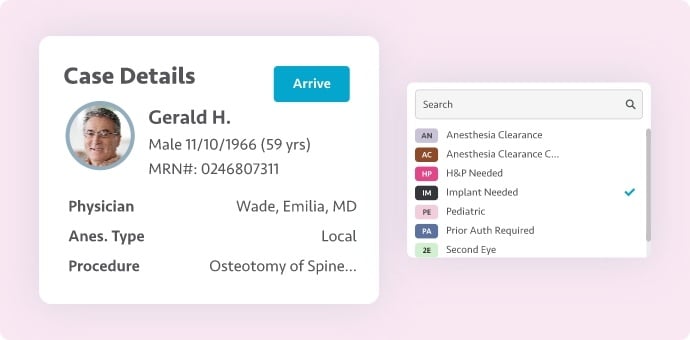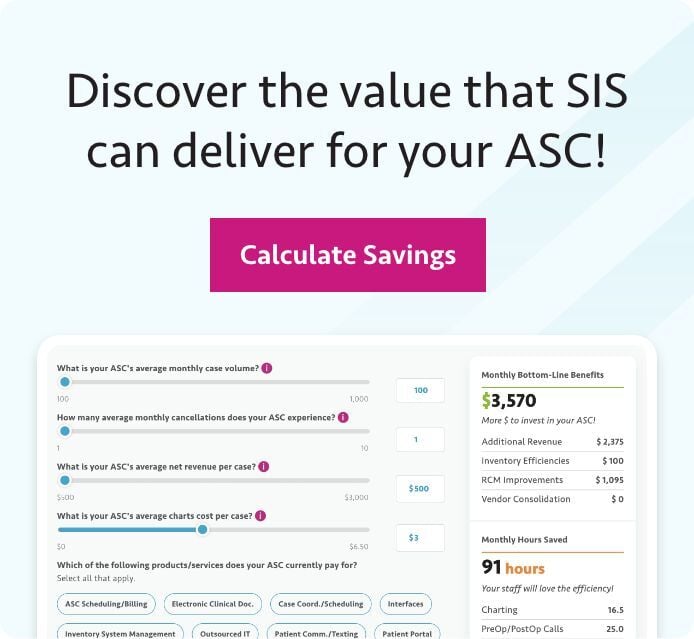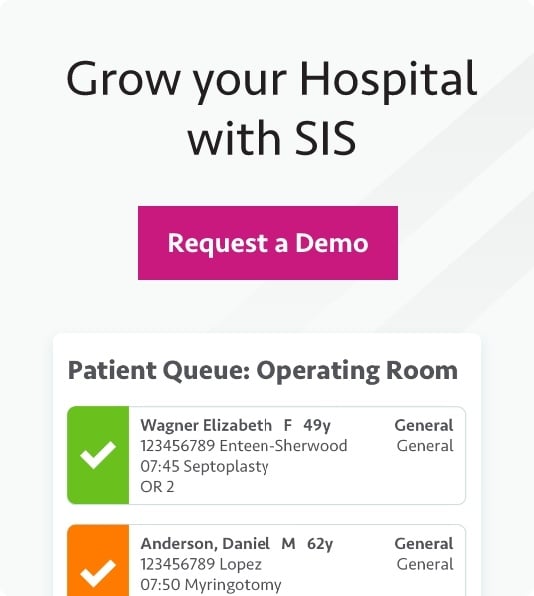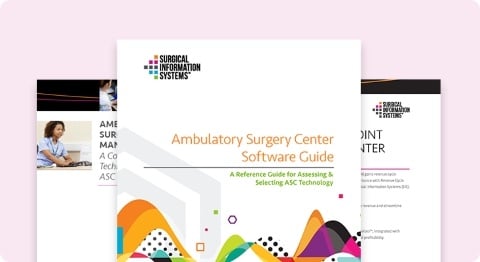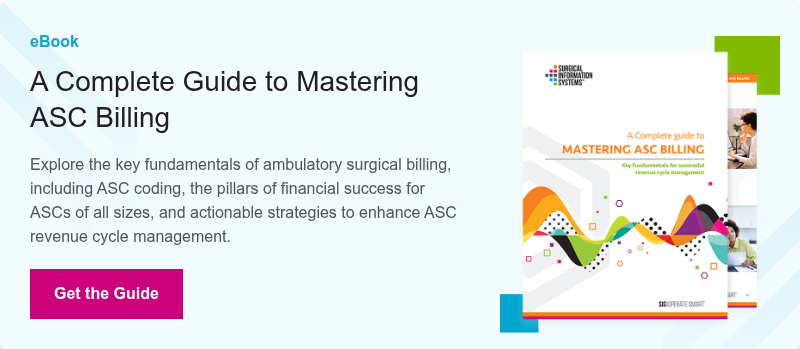Best Practices to Improve Accounts Receivable
With so many obstacles in the way of achieving efficient A/R, you may not know where to start. Whether you’re revising your current A/R strategy or developing a new one, here are some best practices that can help put your ambulatory surgical center billing on the path to improvement.
- Develop clear coding guidelines and quick reference cheatsheets. Since billing processes can change frequently, it’s critical to have rules documented, accessible, and easy to understand at a glance. Reference material should outline coding and billing policies for every payer — from CMS ASC billing guidelines to commercial/private payer rules — and include instructions for modifiers and where to use them for each payer.
- Emphasize the importance of comprehensive surgeon documentation. Surgeons must understand that complete documentation of their procedures is key to coding accurately and to the highest level of specificity. When information is lacking, missing, or unclear, it can result in claim errors or delays, which can impact how quickly they get paid, too.
- Collect copays and deductibles upfront when possible. Establish clear rules around providing estimates and collecting copays, deductibles, and coinsurance payments upfront. Staff should be able to quickly reference guidelines that explain which payers and procedures require payment upfront and what payments need to be collected post-procedure.
- Leverage modern technology that can streamline collections. Digitize paper-based systems or upgrade outdated technology where possible. It should be easy for patients to submit payments on the front end and for staff to navigate collections on the back end. The more up-to-date and friendly the user interface, the better.
- Use payer portals and clearinghouse solutions when available. Integration makes everything easier. By connecting with payer portals directly and leveraging clearinghouse solutions, you can exchange all necessary data between companies and track interactions with ease, which can speed up claim submissions and collections.
- Implement follow-up processes that can drive rapid resolutions. You need a way to pursue non-payments and erroneous payments. Some systems can notify payers about outstanding payments to help receive owed amounts. Automated systems can also trigger alerts at time-based intervals as a reminder to file an appeal after a denial.
- Keep track of A/R separately for each payer. While it can be useful to look at A/R holistically, getting granular detail and separating A/R by payer will help you better identify where issues are cropping up and why. This can better enable you to take targeted corrective actions.
- Closely monitor all claims and ongoing payer correspondence. Having a system to track all billing ASC claims and follow up on the status of payments with payers is essential to making sure nothing falls through the cracks.
- Put an escalation process in place. When all else fails, make sure you have a process established to escalate payment issues to your state's insurance commissioner or an attorney for arbitration. It’s best to have this structure in place ahead of time so you can execute it when necessary.
- Lean on vendors and their expertise to help simplify insurance coverage verifications. Given the complex and evolving landscape of ambulatory surgical center billing, partnering with ASC experts can help you navigate insurance coverage, better understand CMS ASC billing guidelines, and improve your A/R.
- Include billing in patient satisfaction surveys. Seek patient feedback on all aspects of their experience, including billing and payment processes. Doing so will help you understand what is impacting patient collections, so you can develop a plan to make payment easier and friction-free.
Creating an A/R strategy that leans on these best practices is key to streamlining the revenue cycle. But how do you know if that strategy is working?
How to Measure A/R Strategy Success
ASCs need a way to practically assess whether efforts to improve A/R are effective and achieving their intended goals. This is where A/R monitoring can help.
First and foremost, clearly define how you want to measure your A/R. This includes identifying and setting key performance indicators (KPIs) and related metrics. Then, you can use a monitoring solution to track and measure against these benchmarks. Monitoring tools can allow you to track performance by payer type, by individual payer, by individual staff member, and more. Pairing this data with robust analytics capabilities can help you more efficiently and effectively identify areas of ambulatory surgical center billing improvement.
Fast, clean claims should be the expectation. A/R monitoring can flag when this isn’t happening and help you narrow down where things are going wrong. With actionable analytics, you can then address issues quickly and comprehensively, whether the issue is related to problems with documentation, coding, or a lack of follow-up.
Monitoring can also help you identify when billing processes need to be revised. It can enable you to review unpaid claims on an ongoing basis, conduct internal audits, and review codes being submitted, providing a clearer picture of your overall billing and A/R performance. Learn from the challenges you uncover, and conduct training sessions that target these obstacles. In addition, take time to educate staff and surgeons on their impact and role in A/R and why it should matter to them.
Managing all these efforts can be complex and intricate, but there are options to make it easier. For example, an ASC EHR that includes revenue cycle management and analytics capabilities can simplify and strengthen the entire ASC billing process. Such solutions can help you track collections, analyze trends, measure performance, and implement adjustments to improve your ASC's A/R. Bringing all aspects together under a single pane of glass makes it easier to oversee billing ASC claims, optimize financial performance, and ensure every dollar is collected.
Alternatively, you can save yourself the A/R headache by outsourcing revenue cycle management to a partner with ambulatory surgical center billing expertise. This way, you don’t have to worry about the many complexities plaguing the modern ASC landscape and can gain some much-needed peace of mind knowing that your revenue cycle is being managed and optimized by a team of ASC experts you trust.
Improving A/R and Your Ambulatory Surgical Center Billing Performance
Payment delays and denials are unavoidable, but it is possible to greatly reduce them. By following best practices, developing a proactive strategy, and measuring performance, ASCs can maintain an efficient and streamlined revenue cycle that keeps A/R days to a minimum.
Looking for more ways to improve your ASC's revenue cycle? Learn how to avoid denials and develop an effective appeals process by watching this on-demand webinar on boosting ASC collections.




